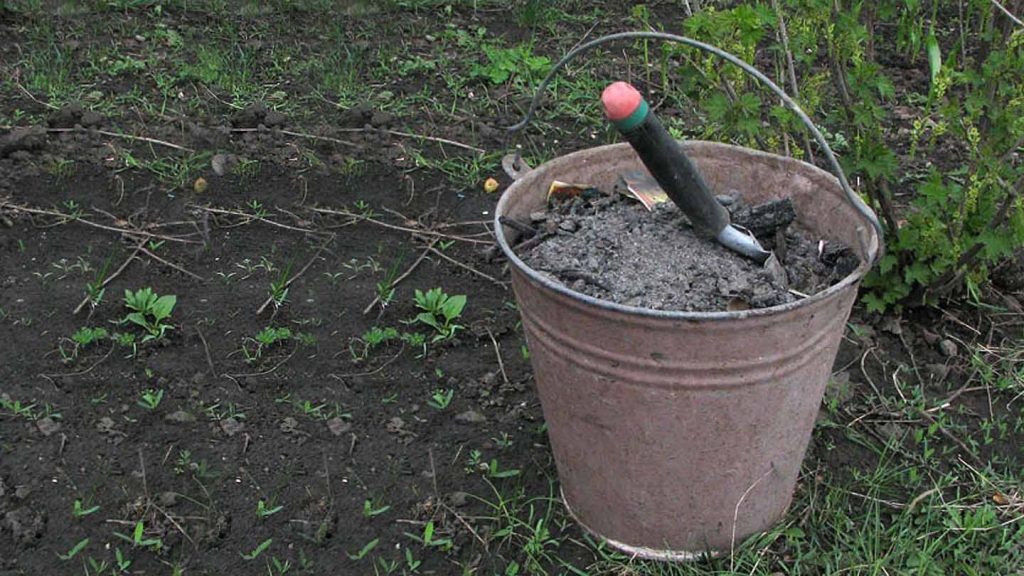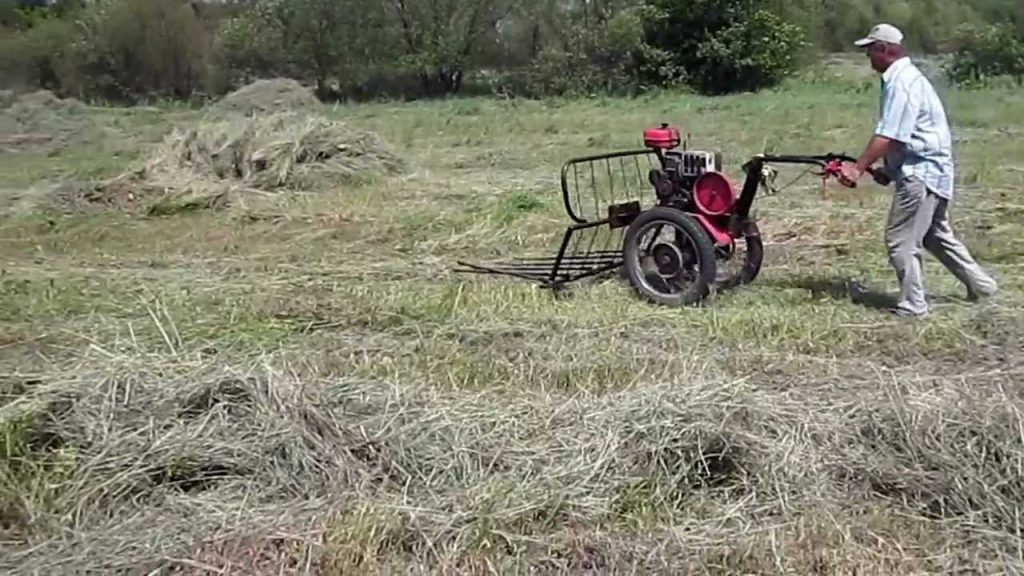Pruning raspberries is one of the important moments of care, on which depends how large the crop will be in this and next year. Without this simple event, the berries can become small, as if in wild forest raspberries, and unsweetened. And the raspberry tree itself from a well-groomed site will turn into impassable thorny thickets, where if some kind of crop grows, it will not be easy to collect it. Raspberry bushes are cut in the spring, and in the summer, and in the fall. For each season, different tasks are set.
Content:
- Why prune raspberries in summer and fall
-
How to prune raspberries in summer and autumn
-
Pruning raspberries
- Sanitary
- Normalizing
- Video: raspberry pruning before wintering
- Root shoot removal
- Double cropping according to Sobolev
- Video: how to cut raspberries according to the Sobolev method
- Pruning raspberry trimmings
-
Pruning raspberries
-
Caring for the bushes after pruning
- Video: how to care for raspberries after pruning
Why prune raspberries in summer and fall
Among the summer raspberry care activities, pruning occupies a special place. It is carried out for several purposes:
- sanitary (throughout the summer) - remove damaged shoots. If individual branches of a raspberry bush are infected with any disease, you should not wait for autumn - you need to immediately cut them out and burn them so as not to infect the entire plant and neighboring plantings;
- formative (in July and August) - remove overgrown growth. Since the raspberry roots are not deep from the surface, it gives a lot of young layers. If there is no need to propagate the bushes, they need to be cut;

In summer, the root shoot around the raspberry bush must be removed so that it does not pick up nutrients
- normalizing (in June) - remove unnecessary young shoots. Some summer residents postpone this type of pruning at the end of summer, but it is more advisable to carry it out as soon as these shoots grow to 30–40 cm: at this time you can already choose the strongest;
- anti-aging (in June or July, depending on the variety) - prepare green cuttings for the propagation of well-bearing bushes and at the same time thin out raspberries for better illumination. Cuttings should be 7-8 cm long, with 2-4 kidneys.

Cut green cuttings must have at least two buds
After a well-conducted pruning, the yield of the bush increases, the growth of young shoots accelerates. Thanks to the better light, they will lay many flower buds, from which sweet berries will appear next year. Plants will receive the maximum possible amount of nutrients, which reduces the number of fertilizers and the dose of fertilizers.
Autumn pruning is performed after fruiting 2-3 weeks before the onset of cold weather. Its purpose - to prepare the bushes for wintering - is cut off by frigid branches, and broken and diseased are removed. The time depends on the place of growing the plant:
- in the southern regions and for early varieties, this, strictly speaking, is not autumn, but the end of July or the beginning of August for ordinary varieties and the end of August - the beginning of September for repair varieties;
- in northern raspberries cut off in early September, when frost begins, the berries stop growing and singing.

With autumn pruning, raspberries remove the prolific shoots
How to prune raspberries in summer and autumn
In order for the pruning to benefit the bushes, it is important to adhere to some rules common to all varieties and regions of raspberry cultivation. For the procedure you will need:
- tight gloves (especially if the grade is with thorns);
- delimbers or pruners;

It is convenient to cut high raspberries with a delimbing knife
- disinfectant liquid in a bucket.
Pruning raspberries
It is carried out taking into account the two-year fruiting cycle, when the bushes yield on the shoots of the second year.
Sanitary
This type of pruning can be done in summer, spring, and fall. It is important to timely remove the yellowing foliage and shoots that you suspect of a disease. Procedure:
- Inspect the bushes for infected branches and pests. Pay attention to such signs:
- yellow or brown foliage;

If a branch with damaged leaves is found on raspberries, it must be cut off urgently so that the infection does not pass to the whole bush
- thickening on the trunk;
- gnawed leaves;
- withered branches.
- yellow or brown foliage;
- Cut each damaged shoot as close to the ground or to the trunk (at an angle).
- Before moving on to the next bush, the secateurs or delimbers are treated with a solution of alcohol, potassium permanganate, or another disinfectant.
Normalizing
When rationing young shoots in the summer, they act according to the following scheme:
- if raspberries are planted with a ribbon, 1.5 m is left between the rows. No more than 8-10 shoots should remain on each running meter;

With a tape landing, pruning is carried out in such a way that no more than 10 shoots are left per running meter
- if raspberry grows by the bush method, 6–7 substitution shoots are left on the bush, the interval between plants is about 70 cm.
In the fall, corrective pruning of young shoots is carried out: the weakest or damaged ones are cut again, leaving about 8 branches on the linear meter, and not more than 5 on the bush. Left shoots overwinter bend to the ground, pinning and warming with spruce branches or sawdust. In the spring they will need to be raised again to the trellis, removing or shortening shoots damaged by frost or rodents.

Before winter, cut raspberry bushes are bent to the ground so that it does not break from the cold wind and is completely covered with snow
It is important to correctly cut the shoots - as close to the ground as possible. If stumps remain, pest larvae can settle in them.
Video: raspberry pruning before wintering
Root shoot removal
After ripening berries in raspberries, there is an active growth of root layers. If you trim this shoot in time, the roots will begin to grow well, and by winter they will get stronger, which eliminates the risk of frosting of raspberry. In addition, a developed root system is the key to good vegetation and active fruiting for the next year. If there is a need to save the shoots, leave only the farthest - no closer than 30 cm from the bush. In summer, they are cut at a height of 10-15 cm from the soil so that they do not take away strength from raspberries.
If raspberry expansion and rejuvenation is not planned this year, the root shoot is completely removed. This is usually required several times during the summer. For this, a spade, vertically placed, is deeply stuck into the ground several times, trying to cut the horizontal root.

The root shoot is cut out by plunging a shovel vertically into the ground
Double cropping according to Sobolev
The author of the method is a gardener with great experience A. G. Sobolev. Thanks to the technology used by him, ordinary raspberries give twice as much yield and bear fruit as a remover - before the cold. To use the method, only those varieties that have a reduced ability to form root shoots are suitable. The shoots are shortened twice:
- At the beginning of June, normalizing pruning is carried out and the shoots that are left are shortened by 15 cm tops. As a result, raspberries produce many side branches, and they grow to about 30 cm in a year.

In the first year of double pruning raspberries, its branches are shortened by 15 cm
- The following year, in early spring, as soon as the snow has melted, these side branches are again cut by 15 cm. As a result, fruitful shoots with flower buds grow on them, from which many berries will be planted in the summer.
Using the Sobolev method, you need to monitor the good illumination of the raspberry bush and, if necessary, thin out the non-fruiting twigs. In addition, when growing raspberries in a tape, the distance between the rows is made longer - up to 2 m and the trellises for rows are stronger so that the bushes strewn with berries do not fall to the ground. On one linear meter of raspberry leaves not 8 shoots are left, as with the traditional method of growing, but not more than 6.
Video: how to cut raspberries according to the Sobolev method
Pruning raspberry trimmings
Remontant, that is, re-fruiting, raspberries require more nutrients than ordinary. Its bushes have a one-year fruiting cycle when the berries ripen on the shoots of the current year. Moreover, in one season, raspberries manage to lay flower buds twice, bloom and give berries.
Therefore, in June-July, when young trunks grow, it is important to thin out the bushes (so as not to feed the "extra mouths" - underdeveloped, broken and diseased branches). After the first wave of fruiting, shoots are cut, on which there were berries, then new ones grow stronger and give a more abundant crop.
After harvesting the second crop, the bushes are completely cut:
- in the northern and central regions of Russia - under the root;

In raspberries with an annual fruiting cycle, all shoots are cut in autumn
- in the southern regions - by 10-15 cm and bend to the ground for wintering.
This different approach is used for the following reason. It happens that in the northern regions, especially in the cool rainy summer, the second crop simply does not have time to ripen. Then pruning under the root is carried out after the first fruiting, as a result, in spring, raspberries give a huge the amount of young growth, on which one yield wave ripens, but for a rather long time - more than two months.
Caring for the bushes after pruning
Any pruning is stressful for the plant, and raspberries are no exception. Therefore, after the procedure, it should be fed:
- in the summer, scatter ash or bone meal under the bushes;

After pruning, raspberry bushes need potassium, which is a lot in wood ash
- sow green manure in the fall, followed by cutting and digging into the soil around the bushes;
- every few years in the fall, make manure or compost.
To prevent bush damage by pests, raspberries are treated with Decis and Fufanon-Nova drugs immediately after the procedure according to the instructions. Bordeaux liquid will help from diseases (after falling leaves, raspberries are sprayed with 3% solution).
Watering raspberries after summer pruning should be done as usual, but after autumn rains need plenty of watering (4 buckets per bush). It is especially relevant in the southern arid regions, since wet soil freezes more slowly than dry soil.
In the autumn, before wintering, it is necessary to change the mulch to fresh: in the old one, larvae of pests and fungal spores may remain.
Video: how to care for raspberries after pruning
Raspberries need regular pruning. You should not wait for autumn to remove excess shoots. If the raspberry is properly rationed, the crop will be rich, and the bushes healthy. With proper care, raspberries bear fruit in one place for many years.
© 2019, homeli.ru. Copying is allowed only with a link back to the source


